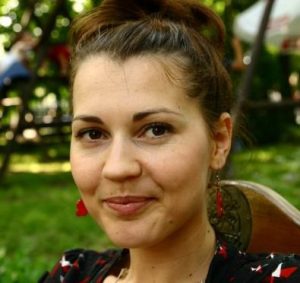Hello! My name is Mariana Derzsi
and I am a theoretical material scientist
My research focuses on atomic-scale modelling of solid crystalline matter. I use Density Functional Theory (DFT) based quantum mechanical methods to model crystal structures and their physicochemical properties. The key aspects of my research are (i) predictive modelling of crystalline phases in minerals and novel inorganic materials, and (ii) atomistic interpretation of experimental observations. Here is a quick overview of my main research areas: ![]()
SILVERLAND In the LTNFM, I collaborate with inorganic solid-state chemists with expertise in inorganic synthesis, spectroscopy, X-ray diffraction and crystallography. We share a common passion for silver chemistry with a goal to broaden the family of Ag(II) compounds to new ligand environments beyond fluorine and to wider (p,T) regimes. The DFT modelling plays a crucial role in our search for potentially interesting candidates and interpretation of experimental observations once the new compound is being synthetized. Up today we have successfully characterized close to 20 silver compounds and predicted the existence of several of them.
UNIFING STRUCTURAL CONCEPTS It is well known that interplay between the d electrons and lattice degrees of freedom can modify crystal structures of transition metal compounds and that the rich electronic phenomena that emerge from different filling of d states can lead to very different structural modifications. An instructive example is found in family of transition metal monoxides MO. Majority of them adopt simple rock salt structure but some show substantial structural diversity crystallizing in very different structural types. In collaboration with Dr. Przemyslaw Piekarz (PAS, Cracow) and prof. Wociech Grochala (head of LTNFM), we have shown that the structural diversity observed in the MO family emerges from the phonon-electron interplay in the rock salt lattice. We have localized the common dynamical instability in all of them and illustrated how the coupling to different electronic degrees of freedom leads to all experimentally observed structures. We are now working on extending this concept to higher pressures as well as to other structural families.
MISSING COMPOUNDS There are certain concepts that we take for granted until we don’t ask ourselves ‘But does it really have to be so?’. It is these kinds of questions that have united the effort of Dr. Andreas Hermann (University of Edinburgh UK), Prof. Roald Hoffmann (Cornell University, Ithaca NY), prof. Wojciech Grochala (head of LTNFM) and I in pursuit of ‘missing compounds’. Together we have decided to oxidize gold, although it is commonly recognized as precious metal due to its low reactivity with oxygen. We have predicted that indeed dynamically stable phases of gold oxide AuO are possible and even achievable given the growing possibilities in high pressure synthesis. This study encouraged us to explore the entire phase diagram of the binary Au-O system and thus new phases are about to come. Together with prof. Wociech Grochala we are now challenging other stubborn elements.
THE EARTH IN DIAMONDS Diamond is the deepest natural sample able to reach the Earth’s surface and thanks to its capability to entrap mineral inclusions during its journey over the entire mantle it provides us inaccessible information about the deepest sectors of Earth. The advances in the experimental techniques to detect these miniscule messengers from the deep Earth in the natural diamond lead to discovery of still new mineral phases. These in turn await their characterizations which, due to their uniqueness and high-pressure origin, rely to a great part on theoretical modelling approaches. Together with prof. Fabrizio Nestola (University of Padova, IT) and Dr. Kamil Tokar (Slovak Academy of Sciences, Bratislava) and prof. Mauro Prencipe (University of Torino, IT) we study the lattice dynamics and thermodynamics of the diamond mineral inclusions with the aim to link their (p,T) stability regions and phase transitions with the depths of their entrapments.

